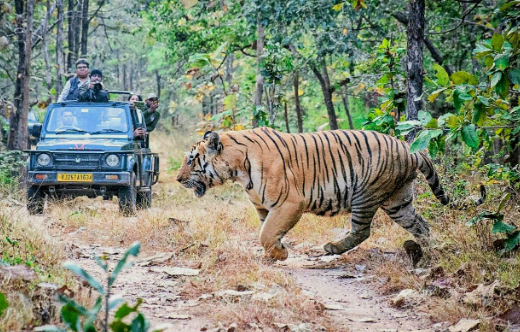The Bengal tiger is one of the most iconic and magnificent creatures on our planet. Known for its striking orange coat adorned with black stripes, this majestic animal holds great significance not only in wildlife conservation but also in culture and mythology. Understanding these large cats enhances our appreciation for biodiversity and the importance of preserving their habitat.
The Habitat of the Bengal Tiger
Bengal tigers are primarily found in India, with significant populations in Bangladesh, Nepal, and Bhutan. They inhabit a variety of ecosystems including mangrove swamps, grasslands, and dry forests, showcasing their adaptability. With a territory that can span over 20 square miles, Bengal tigers require vast areas for hunting and breeding. Unfortunately, habitat loss due to deforestation and human encroachment poses serious threats to their survival. Conserving these diverse environments is crucial not only for the tigers but also for the other wildlife that depends on them.
Diet and Hunting Skills
Bengal tigers are apex predators, primarily hunting large ungulates such as deer and wild boar. They possess extraordinary hunting skills, employing stealth and strength to stalk and ambush their prey. These tigers are primarily solitary hunters, relying on their keen sense of sight and hearing rather than smell. Bengal tigers can eat up to 60 pounds of meat in a single meal, although they often hunt every few days. Their role as top predators helps to maintain the balance in their ecosystems, controlling herbivore populations and promoting healthy vegetation growth.
Conservation Efforts and Threats
Despite being one of the most recognizable animals in the world, Bengal tigers face numerous challenges. Poaching for their fur and body parts, along with habitat loss, has significantly reduced their population. Efforts to conserve the Bengal tiger include national parks and wildlife reserves, such as the Sundarbans and Ranthambore, which provide protected environments for them to thrive. Conservation organizations are also working on anti-poaching initiatives and promoting awareness about the importance of these majestic creatures. Engaging local communities and creating sustainable practices can shift the focus from exploitation to preservation, ensuring a future for Bengal tigers.
In conclusion, Bengal tigers are more than just magnificent animals; they are vital components of their ecosystems and cultural symbols. By learning about their habitat, diet, and conservation efforts, we can better appreciate the delicacy of nature and our role in protecting it. Consider supporting wildlife conservation initiatives or visiting a sanctuary to deepen your understanding of these extraordinary creatures.

